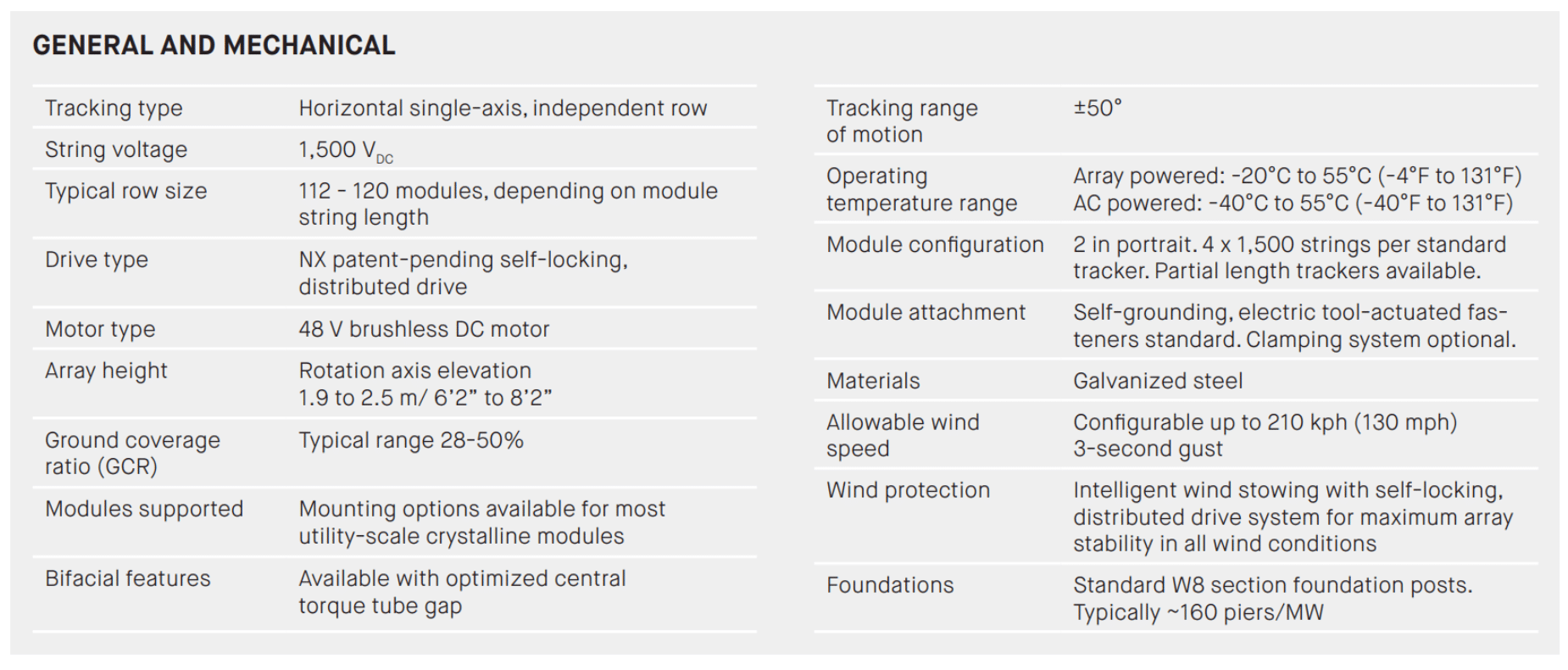NEXTracker is launching a single-axis tracker, with two-in-portrait solar modules (2P) – the NX Gemini (pdf specification page). The product has been designed for developing solar power plants on sites “with challenging soils, high winds, and irregular boundaries”.
The NX Gemini does this by controlling torsional and dynamic wind forces through a series of distributed gear systems, as well shortening the length of units by a third. With shortened row lengths, designers are able to make greater use of irregularly shaped and undulating land.
Talking with pv magazine USA, NEXTracker’s CEO Daniel Shugar (Shug) said this undertaking involved first principle design considerations:
The torsional wind force is the thing that’ll blow your tracker to smithereens! And this force is a squared function of the tracker width, thus a tracker four meters wide versus two, will bear 400% more torsional force. This means you better know what you’re doing with a 2P tracker.

One challenge the power industry need work through are land use stresses and the realities of the complex politics surrounding this topic. In general, our species is still figuring out how to create a sustainable presence on this finite rock. With this, we’re attempting to limit the stresses we place on our ecosystems by evolving our product offerings.
Research is showing we can meet global energy use using less than 1% of farmland for solar, as such, it might be that the land use debate is less valid than we think. Nonetheless, with developers suggesting the low hanging fruit of substations space near good, and inexpensive land is gone (I know where a large chunk of it is), and that solar can actually increase grazing resources available by 90% on dry land, it might be, that products like this do more than help meet our our great land use responsibility, but create new land use opportunities.
Shug told us that when the company’s first single axis tracker was designed – the NX Horizon – it was aimed to hit the center part of the market. The market of reasonable wind speed, soil and topography. The product gained NEXTracker a 30% market share, and Shug modestly suggested it, “it worked really well for us”. Now, as the solar industry has expanded, it was time to begin work on a second product line.
Considering the costs of the new hardware, from a direct cost per watt measurement, the NX Gemini is more expensive. However, the fact that it can carry more wattage per each of those heavier foundations, and that its stouter stature allows you to squeeze in a greater number of individual rows onto irregular sites, plus a bit more nuance in that every site has variability – means that the use case often drives costs tighter with the original NX Horizon pricing.
When a project is delivered, below image, it comes with a 10 year structural warranty, and a five year drive and control components warranty – meaning there will be operations and maintenance requirements, unless fixed racking. As, well, the hardware comes with PE stamped structural calculation and drawings, along with onsite training and final system commissioning after construction is complete.

The racking system is driven by all mechanical means, meaning no cables, no open teeth, no open pulley, and everything is enclosed, while also up in the air. The hardware is most located at or above head height, meaning no contact with most body parts was specifically noted. Shug noted this takes the hardware out of harm’s (snow, flood, dust, dirt, and livestock) way.
Things still break though, and one additional benefit that NEXTacker brings to the table is that the thinking part of their product is manufactured by Flextronics, one of the world’s largest manufacturers. And while racking companies don’t have a cool bankability list like solar modules do, Shug suggested that the largest development groups do have a list – and suggested that you want a company like NEXTracker because there are plenty of sites, with out of business tracking companies, who did very expensive rebuilds with new hardware.
In Washington State grazing revenue for one site went from $2/acre/year to $300/acre/year. In Texas in 2017, wind and solar energy provided landowners with an estimated $90.4 million in land lease payments. In California, farmers are “planting solar panels” as water supplies dry up.
As a writer and a solar power developer, I hear from many landowners seeking to gain revenue from their sites. Not every site makes sense, for many reasons – state level laws being the biggest of drivers. But maybe now, there’s one fewer reasons to not go solar.
![]()
This content is protected by copyright and may not be reused. If you want to cooperate with us and would like to reuse some of our content, please contact: editors@pv-magazine.com.








By submitting this form you agree to pv magazine using your data for the purposes of publishing your comment.
Your personal data will only be disclosed or otherwise transmitted to third parties for the purposes of spam filtering or if this is necessary for technical maintenance of the website. Any other transfer to third parties will not take place unless this is justified on the basis of applicable data protection regulations or if pv magazine is legally obliged to do so.
You may revoke this consent at any time with effect for the future, in which case your personal data will be deleted immediately. Otherwise, your data will be deleted if pv magazine has processed your request or the purpose of data storage is fulfilled.
Further information on data privacy can be found in our Data Protection Policy.